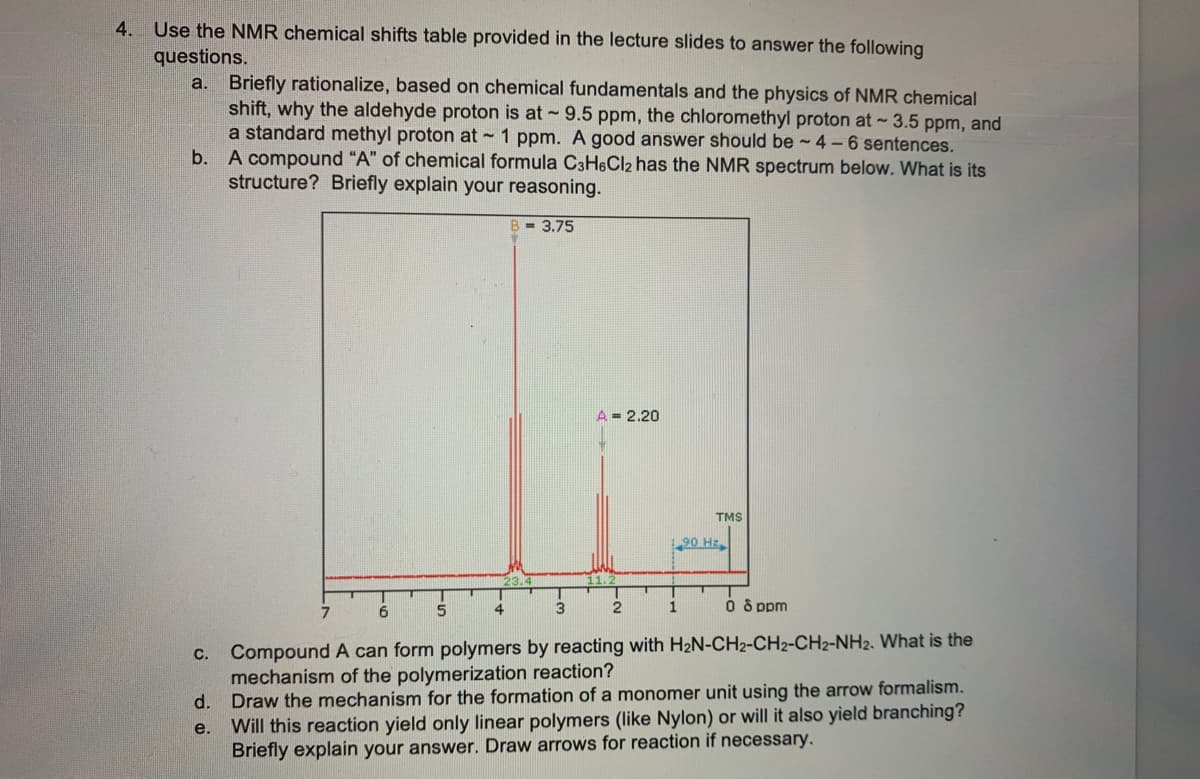4. Use the NMR chemical shifts table provided in the lecture slides to answer the following questions. a. Briefly rationalize, based on chemical fundamentals and the physics of NMR chemical shift, why the aldehyde proton is at 9.5 ppm, the chloromethyl proton at-3.5 ppm, and a standard methyl proton at 1 ppm. A good answer should be -4-6 sentences. b. A compound "A" of chemical formula C3H6CI2 has the NMR spectrum below. What is its structure? Briefly explain your reasoning.
Analyzing Infrared Spectra
The electromagnetic radiation or frequency is classified into radio-waves, micro-waves, infrared, visible, ultraviolet, X-rays and gamma rays. The infrared spectra emission refers to the portion between the visible and the microwave areas of electromagnetic spectrum. This spectral area is usually divided into three parts, near infrared (14,290 – 4000 cm-1), mid infrared (4000 – 400 cm-1), and far infrared (700 – 200 cm-1), respectively. The number set is the number of the wave (cm-1).
IR Spectrum Of Cyclohexanone
It is the analysis of the structure of cyclohexaone using IR data interpretation.
IR Spectrum Of Anisole
Interpretation of anisole using IR spectrum obtained from IR analysis.
IR Spectroscopy
Infrared (IR) or vibrational spectroscopy is a method used for analyzing the particle's vibratory transformations. This is one of the very popular spectroscopic approaches employed by inorganic as well as organic laboratories because it is helpful in evaluating and distinguishing the frameworks of the molecules. The infra-red spectroscopy process or procedure is carried out using a tool called an infrared spectrometer to obtain an infrared spectral (or spectrophotometer).

Step by step
Solved in 2 steps with 2 images




